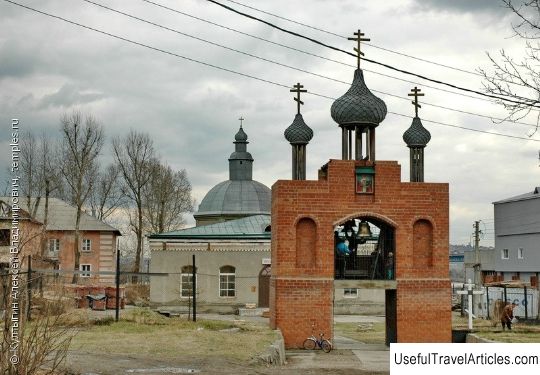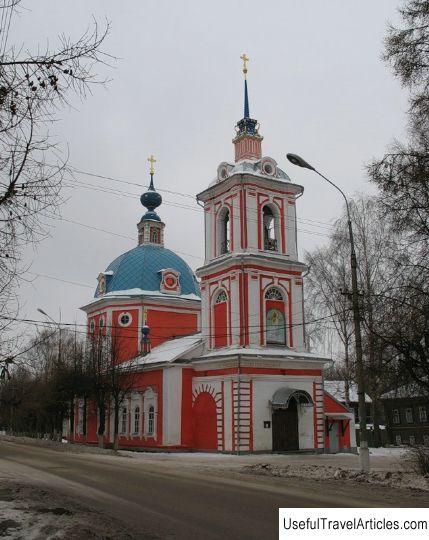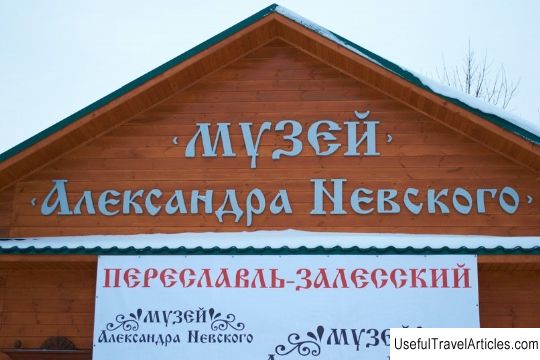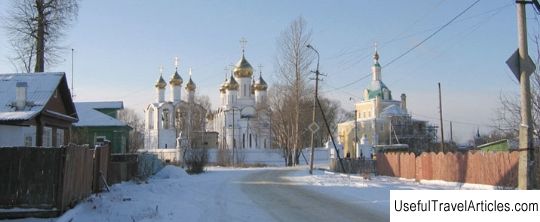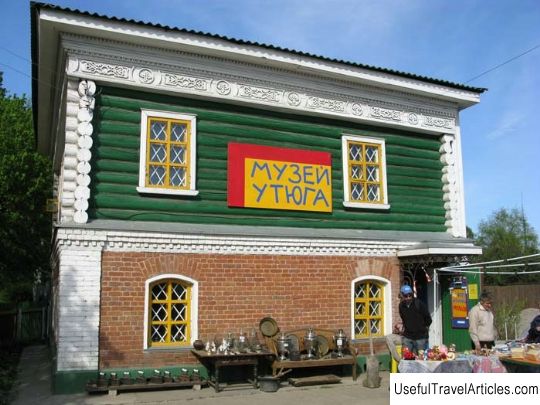Smolensko-Kornilievskaya church description and photos - Russia - Golden Ring: Pereslavl-Zalessky
Rating: 8,8/10 (7654 votes) 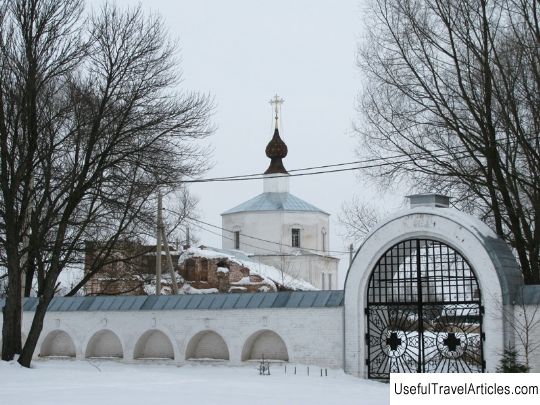
Smolensk-Kornilievskaya church description and photos - Russia - Golden Ring: Pereslavl-Zalessky. Detailed information about the attraction. Description, photos and a map showing the nearest significant objects. Photo and descriptionIn the city of Pereslavl-Zalessky, on Gagarina street, house 27, there is a small Smolensko-Kornilievskaya church. The temple stands on the very place where the Borisoglebsk monastery was located earlier until the 18th century, or as it was also called Pesotsky, which was located next to the large Nikolsky monastery. The foundation of the Borisoglebsk monastery took place in 1252, which is confirmed by the chronicles sources for the 17-18 centuries. This event happened when the Tatar army attacked the city of Pereslavl, in those days called Pereyaslavl. According to ancient legends, Zhidislav, a famous and talented Pereyaslavl voivode, was buried at the location of the monastery. The monastery was built quite small and, in terms of its architectural content, is quite simple and modest. It should be noted that by the time the monastery was abolished, only 48 dependent serfs were in its possession. Soon Empress Catherine II issued a decree on the secularization of all monastic property - this happened in 1764 - it was in this year that the monastery was abolished, while the Smolensk-Kornilievskaya church turned into a parish church. Along the perimeter of the temple there was an extended and rather large cemetery, where prominent and famous residents of the city were buried; one of these people was A.A. Temerin is the mayor. The historical development of the Borisoglebsk Monastery is closely intertwined with the name of St. Cornelius - it was in honor of this saint that the consecration of the church that remained from the previously existing monastery took place. The Monk Cornelius the Silent, whose name in the world was Konon, came from a noble merchant family from the city of Pereslavl-Ryazan. At a young age, Konon left his parental home and began to live independently in the Lucian Desert. Soon, Cornelius moved to the famous Borisoglebsk monastery, in which he took a vow of silence for his entire life. At that time, the monastery was significantly poor, which is why little Cornelius tried to work on an equal footing with other monks, who were very few in the monastery. After some period of time, Cornelius was tonsured a monk. In the middle of 1693 he died suddenly, and his relics were deposited in the Smoyensko-Kornilievskaya church. Unfortunately, Saint Cornelius was not honored with the all-Russian canonization and remained in local veneration. Today the relics of Cornelius are at the Nikolsky Monastery. The stone Smolensko-Kornilievskaya Church is a complex and multifaceted composition, which directly connects the temple part, the refectory room, the bell tower and the monastic cells. Initially, it was built as a monastery, and its consecration took place in honor of the Smolensk Icon of the Mother of God. The composition of the entire church is quite simple, but elegant in its own way: on a small quadrangle there is an absolutely proportional octagon, the wedding of which is decorated with only one cupola. The window openings of the temple are framed with baroque platbands typical of the 18th century. In the immediate vicinity of the temple there are some monastic buildings. To date, most of them are almost completely dilapidated and collapsed - this is the bell tower, the refectory room and two-story cells located above the bell tower. The connection of these parts is made in a completely unusual and uncharacteristic manner, but at the same time the Smolensk-Kornilievsky temple looks like a whole building. The existence of the temple lasted until 1940, after which it was closed. In the vacated building, it was planned to open an anti-religious museum department, as well as to open the burial place of St. Cornelius, which was located in the aisle. Until the 1960s, the temple was used as a warehouse, and apartments intended for living were placed in the cells and the refectory room. Unfortunately, in 1988 the bell tower collapsed and only the lower tier remained in its place. Today the Smolensk-Kornilievskaya church is being renovated.     We also recommend reading Cascade ”Shakhmatnaya Gora” description and photos - Russia - St. Petersburg: Peterhof Topic: Smolensko-Kornilievskaya church description and photos - Russia - Golden Ring: Pereslavl-Zalessky. |
